Nissan Pathfinder Vs Toyota Highlander: Which SUV is Right for You?

Nissan Pathfinder vs Toyota Highlander. It’s a rivalry that’s been going on for over 20 years.
Originally, the Pathfinder was more of the rugged SUV while the Highlander was little more than a raised-up, all-wheel drive minivan. But over the decades the two models have slowly evolved to meet in the middle as comfortable, three-row family vehicles that still have acceptable off-road capabilities.
Get a Quote on a New Nissan Pathfinder or Toyota HighlanderThe Highlander has been on sale in its current form for three years now and will be getting a full mid-cycle refresh later this year. Currently, it can be had with a multitude of powertrains, including a traditional V6 or a full-hybrid system. The Pathfinder on the other hand is all-new this year, sold exclusively with a V6 engine and a new nine-speed automatic transmission.
But which one is the best for you? We have taken an in-depth look at both vehicle’s specifications, features, and attributes to help you decide.
Cabin Space
Pathfinder: The Pathfinder’s legroom is generous for front seat passengers at 44.3 inches (1,126 mm). Second row denizens receive 35.5 inches (902 m) while rear seat dwellers make do with a mere 28 inches (712 mm).
Headroom is listed at 42.3-inches (1,075 mm) for front seat passengers, or slightly reduced to 41.1 inches (1,046 mm) with the optional moonroof. The second row offers 39.6 inches (1,008) of headroom without the moonroof or 38.4 inches (976) with it equipped. Those in the third row have 37.8 inches (961 mm) of headroom that is unchanged regardless of which roof is installed.
Toyota Highlander: Front seat passengers of the Highlander receive 41.2 inches (975 mm) of headroom, or 39.6 inches with the optional sunroof. Headroom gets further reduced to 38.4 inches with the panoramic sunroof found on higher trims. Legroom for front seat passengers is set at 42 inches (1,067 mm).
In the second row, occupants get 39.4 inches (942 mm) of headroom, or 37.1 inches with the optional panoramic sunroof. The second row includes a generous 41 inches (1,041 mm) of legroom. Those regulated to the third row get 36.1 inches (917 mm) of headroom regardless of which roof is installed, and just 27.7 inches (704 mm) of legroom.
Bottom Line: The Pathfinder offers more headroom in all three rows as well as more legroom for front seat passengers. The Highlander’s second row is more spacious, but things tilt back in favor for the Pathfinder with the third row. The advantage here goes to the Nissan.
Cargo Space and Towing
Pathfinder: Cargo space behind the third row of the Pathfinder sits at 16.6 cu ft. (470 L). With the third row of seats folded down, space increases to 45 cubic feet (1,274 L). To maximize cargo capacity, fold down the second row of seats as well for a total of 80.5 cubic feet (2,280 L).
The Pathfinder is one of the highest rated vehicles in this segment for towing, with an official rating of 6,000 lbs. (2,722 kg) when properly equipped. Front-wheel drive models are still decent towers, with 3,500 lbs. (1,588 kg) of capability.
Toyota Highlander: The Toyota Highlander eclipses the Pathfinder’s total cargo capacity with 84.3 cu-ft (2,386 L) of cargo space behind the front seats. With just the third row folded, space is listed at 48.4 cu-ft (1,370 L) behind the second row seats. With all seats in place, cargo space is just 16 cu-ft (453 L).
The front-wheel drive Highlander matches the Pathfinder with an ability to tow 3,500 lbs (1,588 kg) when properly equipped. All-wheel drive models fall a bit short of the Nissan with a maximum tow rating of 5,000 pounds (2,268 kg).
Bottom Line: Fold either row of seats, and the Highlander holds the cargo carrying advantage. But behind the third row, the Pathfinder has the slightest bit more capacity. Towing for front-wheel drive models is a tie while the Pathfinder holds an edge when towing with all-wheel drive equipped vehicles. Overall, this category is a wash as the Highlander is the slightly better cargo hauler while the Pathfinder is the slightly better tower.
Technology and Features
Pathfinder: The Pathfinder S is the entry level trim that comes equipped with a tri-zone climate control, 18-inch alloy wheels, and push-button start. Also included in this trim are LED headlights, manual front cloth seats, and a 8-inch infotainment system. Next up is the Pathfinder SV that adds heated front seats, a power driver’s seat, remote engine start, and Sirius XM satellite radio. There’s an optional SV Convenience packages includes the towing package, power lift gate and panoramic sunroof.
SEE ALSO: Nissan Pathfinder vs Volkswagen Atlas ComparisonThe SL trim includes leather seats, a heated steering wheel, LED fog lights, a 9-inch infotainment system, power lift gate, rear sunshades, and power passenger seat. The SL trim also has an optional Premium Package. It adds 20-inch alloy wheels, the tow package, and an upgraded stereo system.
The Top of the line Pathfinder trim is called the Platinum and it includes 20-inch wheels, a panoramic sunroof, wireless phone charger, the tow package, and an upgraded sound system.
Toyota Highlander: The Highlander comes standard in L trim with cloth seats, a power driver’s seat, tri-zone climate control, a 8-inch infotainment screen, and push button start. The LE trim adds LED fog lights, a power lift gate, and more. Step up to the XLE and included are SoftTex seats, power passenger seat, wireless phone charging, and second row captain’s chairs. The XSE upgrades to 20-inch wheels, black and gray exterior trim, and ambient lighting.
The Limited trim level feature a heated steering wheel, an 11-speak JBL sound system, and leather seating surfaces that are heated and cooled. The top trim is Platinum which includes heated second row captains chairs, a digital rearview mirror, head-up display, 360-degree cameras and a 12.3-inch infotainment system. Various option packages exist on most trim levels as well, helping to split the difference between each one.
Bottom Line: Although both vehicles can be had with a multitude of options, there is a lot more choice with the Toyota Highlander. More trim levels and more option packages means it is easier to find a Highlander that suites your needs.
Powertrains
Pathfinder: The Pathfinder continues to use a 3.5-liter V6 engine as the vehicle’s only drivetrain option. Power is rated at 284 HP and 259 lb-ft of torque. Gone is the continuously variable transmission of the previous generation. It’s now replaced by a nine-speed automatic unit. All trim levels of the Pathfinder come standard with front-wheel drive, but can be optioned to include all-wheel drive.
Toyota Highlander: The Toyota Highlander can also be powered by a 3.5-liter V6, but holds a slight advantage with 295 horsepower and 263 lb-ft of torque. It utilizes an eight-speed automatic transmission that sends power to the front-wheels as standard equipment. Like the Pathfinder, all trim levels of the Highlander can be upgraded to include all-wheel-drive.
Unlike the Pathfinder, there is another drivetrain available on the Highlander – the Hybrid. Using a 2.5-liter four-cylinder engine combined with a pair of electric motors, the Highlander Hybrid generates 243 total system horsepower. All Hybrids come with a continuously variable automatic transmission and come with front wheel drive or utilize electronic all-wheel drive (the rear wheels are powered independently from the engine via an electric motor).
Bottom Line: The Highlander holds the advantage here offering a slightly more powerful V6 engine as standard equipment, while also including the choice of an efficient Hybrid option.
Fuel Economy
Pathfinder: Pathfinders equipped with front wheel drive are rated at 21 mpg city and 26 mpg on the highway. By adding all-wheel drive to the S, SV, and SL trim levels, fuel economy ratings are actually better. They are rated at 21 mpg city and 27 mpg highway. The heavier Platinum 4WD is rated at 20 mpg city and 25 mpg highway.
Toyota Highlander: Gasoline-only Toyota Highlanders with front-wheel-drive are rated at 21 mpg city and 29 on the highway. All-wheel-drive models are rated at 20 mpg around town and 27 mpg on the highway. Hybrid models achieve 35 mpg in the city and 35 mpg on the highway. Higher trim Hybrid Highlanders do see a 1 mpg reduction in highway efficiency though.
Bottom Line: The Toyota Highlander holds a fuel economy advantage for front-wheel drive models as well as offering a highly efficient all-wheel drive hybrid option. But for regular V6 AWD models, the Pathfinder holds a slim fuel efficiency advantage.
Safety
Pathfinder: All Pathfinders come equipped with standard safety systems. They include forward collision warning, automatic emergency braking with pedestrian detection, lane departure warning, blind spot warning, rear cross traffic alert, rear automatic braking and high beam assist. The SV trim level adds Nissan’s ProPILOT Assist system, intelligent lane intervention, and blind spot intervention. The top two trims take safety a step further. The SL and Platinum include the Around View Monitor.
Toyota Highlander: Every Toyota Highlander comes standard with the Toyota Safety Sense 2.5+ system. It includes Pre-Collision System with Pedestrian Detection, Dynamic Radar Cruise Control, Lane Departure Alert, Automatic High Beams, Lane Tracing Assist, and Road Sign Assist. Highlander’s also come standard with the Star Safety System, which includes Enhanced Vehicle Stability Control, Traction Control, Anti-lock Brakes, Electronic Brake-force Distribution, Brake Assist, and Smart Stop Technology.
SEE ALSO: 2022 Toyota Highlander Hybrid Bronze Edition Review: Podium FinishThere is also the Safety Connect system, which adds Emergency Assistance, Stolen Vehicle Locator, Roadside Assistance and Automatic Collision Notification. The only safety feature which isn’t standard on all models is Front and Rear Parking Assist with Automatic Braking, which comes on Limited and Platinum models.
Bottom Line: Toyota offers more standard safety equipment than Nissa and holds the edge here.
Styling
Pathfinder: The latest Pathfinder has adopted a more rugged style for this generation, looking more like a traditional SUV and less like a crossover. It’s squared off, but not as much as the boxier entrants from Subaru and Jeep. The front end feature Nissan’s signature design language, with the rear housing a sophisticated appearance that could be confused for higher-end vehicles.
Toyota Highlander: As mentioned, the Highlander is due for a refresh, so this look is on its way out. The sharply-angled, LED-trimmed headlights and corporate front fascia make it instantly recognizable as a Toyota SUV. The Highlander has black-painted B- and C-pillars to create the floating roof look.
Bottom Line: Styling is a wholly subjective thing, so beauty is in the eye of the beholder. To us, we like the fresher face of the Pathfinder.
Pricing
Pathfinder: The S 2WD is the starting point for the Pathfinder and begins at $35,856 (all prices include a $1,225 destination fee). The next trim level up is the SV 2WD and commands a price of $38,685. It can be had with a Premium Package that costs an additional $2,170.
The Pathfinder SL 2WD rings in at $41,765 and can be optioned with a $2,900 Premium Package. The top of the line Pathfinder is the Platinum 2WD that starts at a price of $48,365. Any of the Pathfinder trims can have all-wheel drive added to them for $1,900.
Toyota Highlander: The Toyota Highlander L begins at a price of $37,070 for front-wheel-drive after destination charges. The all-wheel drive L comes in at $38,670. The LE starts at $39,270 for front-wheel drive, or $40,770 for the hybrid powertrain. Adding all-wheel drive to LE gasoline vehicle raises the price to $41,295 while the hybrid all-wheel LE costs $42,370.
The gasoline XLE front-wheel drive starts at $42,270, while the all-wheel drive commands $43,870. The XLE hybrid front0-wheel drive rings in at $43,770, with added all-wheel drive raising the price to $45,370. The XSE only comes with the gasoline engine and starts at $43,865 for front-wheel drive while all-wheel drive editions cost $45,815.
New this year is the Hylander Bronze Edition that only comes with the hybrid powertrain and all-wheel drive. It has a list price of $45,795. The second to highest trim is the Limited which is available with a choice of four powertrains. All gas front-wheel drive Limiteds are priced at $46,225 with all-wheel drive models coming in at $48,175. Hybrid Limiteds are $48,150 for front-wheel drive and $49,675 for all-wheel drive.
Finally, the top-of-the-line Highlander Platinum starts at $49,225 for front-drive and $51,175 with all-wheel-drive. Add the hybrid drivetrain and pricing increases to $51,150 for front-wheel drive and $52,675 for all-wheel drive.
Bottom Line: The Pathfinder has a lower overall starting price, but both models are closely matched all the way up through their trim levels. Not including the Hybrid models, it’s a virtual tie.
In Conclusion
Both of these vehicles have been massive sales successes for their manufacturers and it is easy to see why. The all-new Pathfinder should continue this trend for Nissan. It addresses a few of the previous model’s faults while still being class competitive in all regards.
The Highlander may be getting a bit old, but there’s a reason it is still so popular. The amount of choice and possible ways to configure a Highlander are immense. There’s a Highlander for every potential three-row SUV buyer.
But when it all comes down to it, we lean ever so slightly towards the Pathfinder. A marginally larger cabin and fresher design sways our votes by the slimmest of margins. But the Highlander is imminently due for a refresh. And knowing Toyota, it will push hard to once again regain the advantage.
Become an AutoGuide insider. Get the latest from the automotive world first by subscribing to our newsletter here.

A 20+ year industry veteran, Mike rejoins the AutoGuide team as the Managing Editor. He started his career at a young age working at dealerships, car rentals, and used car advertisers. He then found his true passion, automotive writing. After contributing to multiple websites for several years, he spent the next six years working at the head office of an automotive OEM, before returning back to the field he loves. He is a member of the Automobile Journalists Association of Canada (AJAC), and Midwest Automotive Media Association (MAMA). He's the recipient of a feature writing of the year award and multiple video of the year awards.
More by Mike Schlee



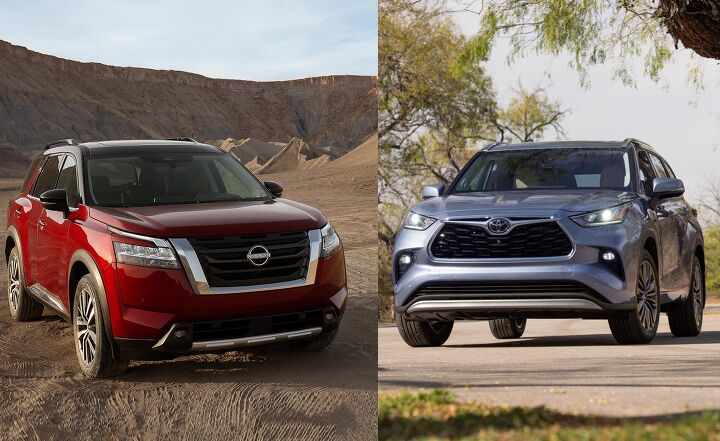

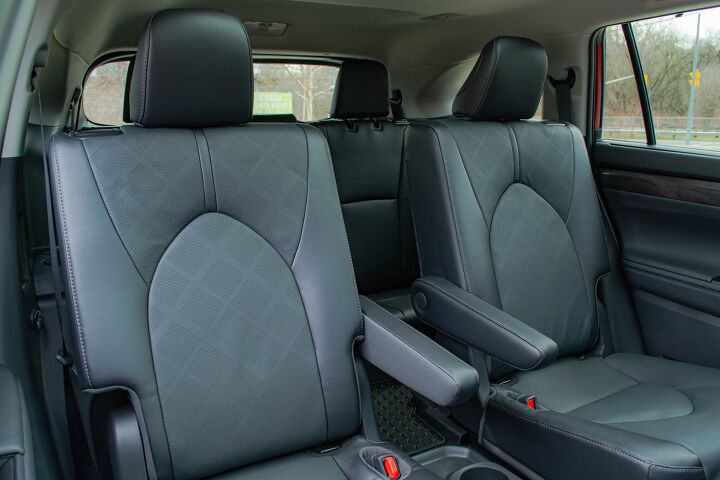
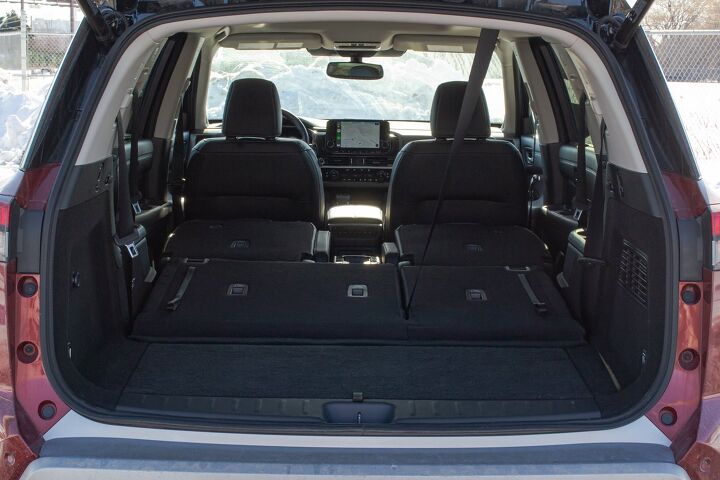







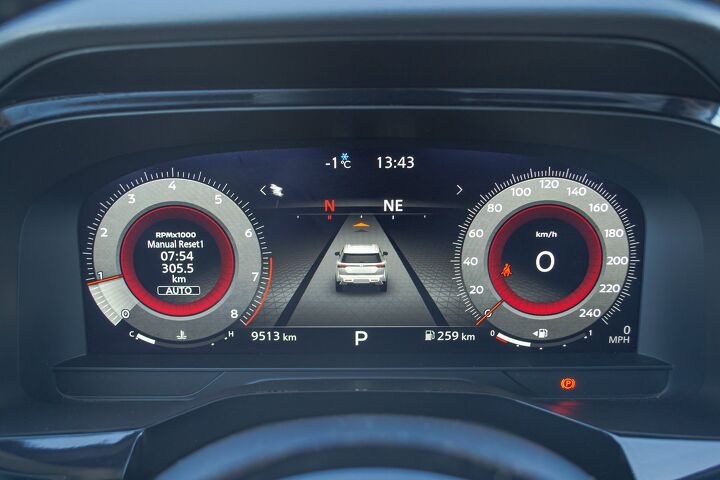



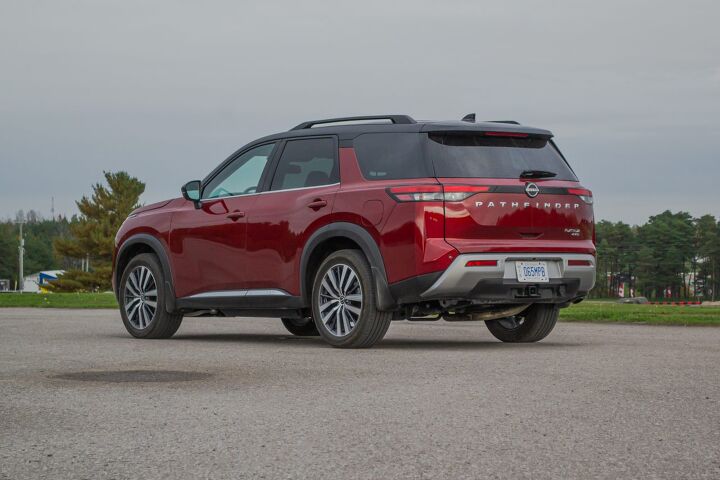















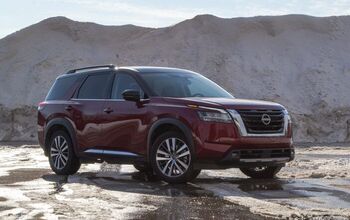
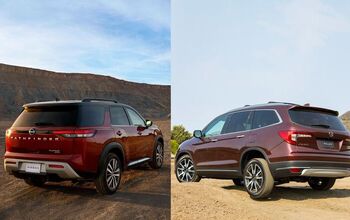
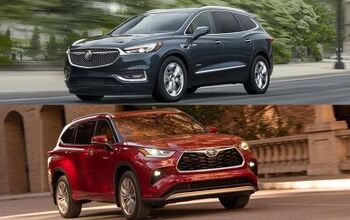
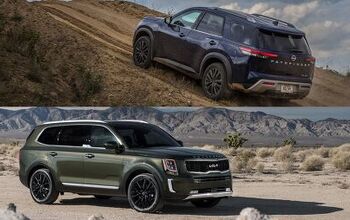


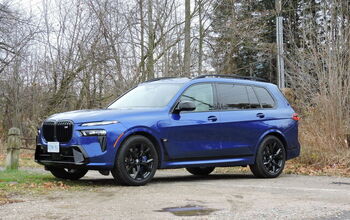





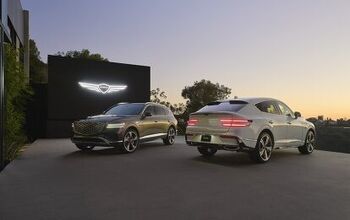
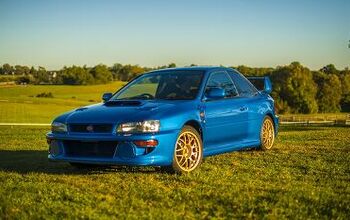

Comments
Join the conversation